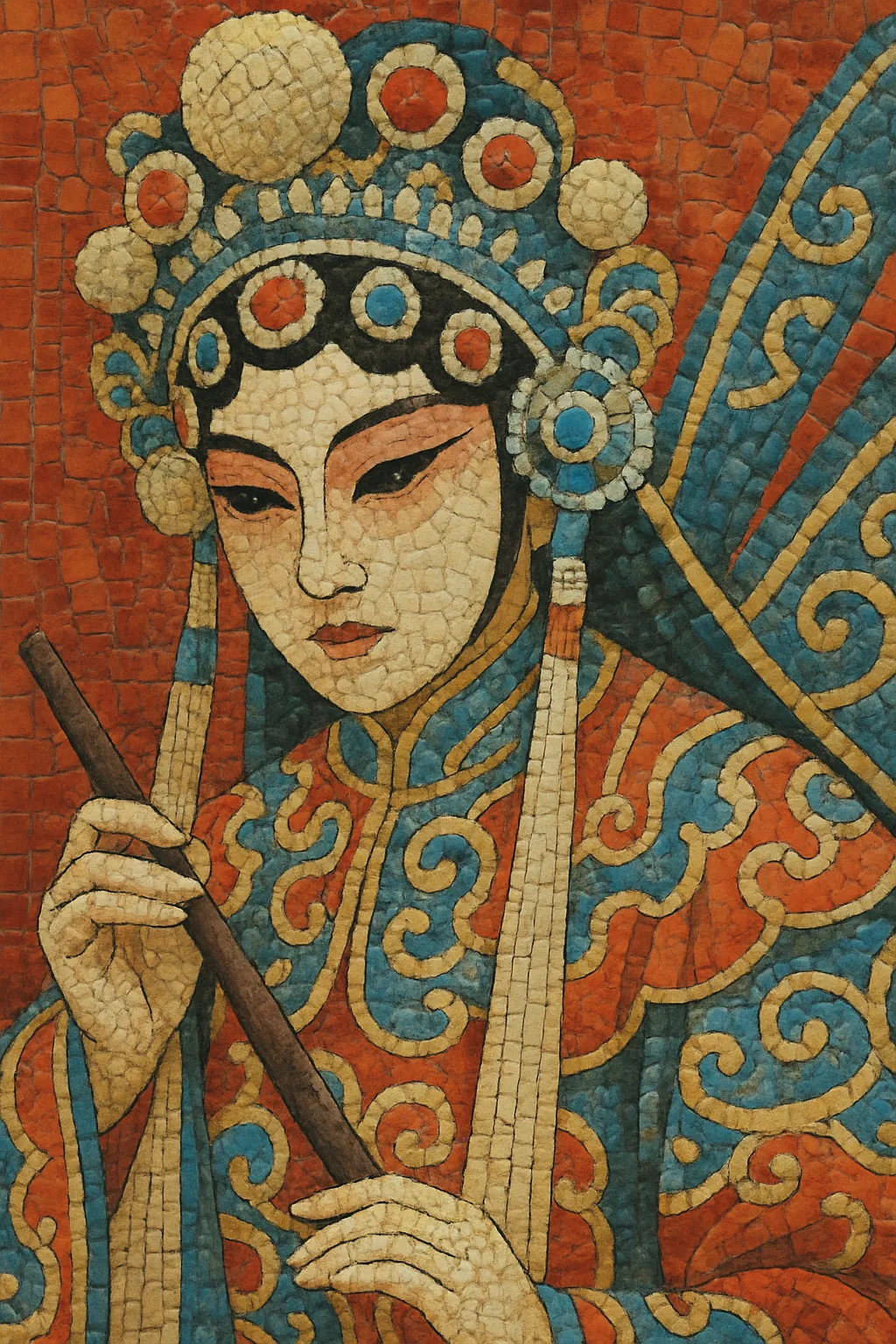Chinese opera (xiqu) is a family of traditional Chinese sung-drama forms that merge music, poetic text, stylized speech, dance, mime, and acrobatics into a total theatre.
Musically, it is built on pentatonic-centered melodies, heterophonic textures, and a flexible "banqiang" system of tune-types and meter that adapts melodic formulae to changing text and dramatic situations. A small melodic ensemble led by the high-pitched jinghu (or regional equivalents) accompanies the voices, while a percussion battery (bangu drum, gongs, and cymbals) functions as both timekeeper and dramatic cue-giver.
Performance is highly codified: role categories (sheng, dan, jing, chou), emblematic makeup and costumes, and conventionalized gesture and movement communicate character, mood, and plot. Staging is minimal and symbolic, placing emphasis on vocal delivery, timing, and physical vocabulary.
The tradition encompasses hundreds of regional styles—among them Kunqu, Beijing (Peking) opera, Yue (Shaoxing) opera, Sichuan opera, and Qinqiang—each with distinctive vocal timbres, tune systems, dialects, and orchestration, yet sharing the overarching xiqu aesthetics.
Chinese opera traces its roots to the Southern Song period, when the early sung-drama form nanxi crystallized in the 12th–13th centuries. Parallel developments in the north produced Yuan-dynasty zaju, with playwrights such as Guan Hanqing shaping a dramaturgy that fused poetic arias with spoken scenes. These stage traditions drew upon earlier ritual and court musics (yayue), literati musical-poetic practices, and popular narrative-singing.
In the 16th century, Kunqu emerged around Suzhou after reformer Wei Liangfu standardized elegant vocalism and accompaniment. Kunqu’s refined aesthetics—bel canto-like line, delicate gesture, and sophisticated poetry—reached a pinnacle in masterworks like Tang Xianzu’s The Peony Pavilion. The qupai and banqiang systems matured, enabling flexible recomposition of established melodic frameworks to fit new texts and scenes.
From the late 18th century, troupes from Anhui and Hubei brought regional tunes to the capital, coalescing into Beijing (Peking) opera. Its two principal tune families, Xipi and Erhuang, offered contrasting dramatic affects and meters, while percussion patterns codified entrances, fights, and emotional shifts. Role-type schools (jia) formed, and stars such as Tan Xinpei and later Mei Lanfang defined vocal and acting lineages.
Recording and film spread opera nationwide; female performers became prominent in traditions like Yue opera. Republican-era reforms experimented with new subjects and staging. After 1949, repertoire and staging were standardized; during the Cultural Revolution, model (revolutionary) operas recast xiqu techniques with modern instrumentation and socialist narratives. Post-1978 reforms revived classical repertoires and invested in preservation while encouraging new works.
Today, Chinese opera is performed across China and the diaspora, supported by conservatories and state troupes. Preservation of intangible cultural heritage (e.g., UNESCO-inscribed Kunqu) coexists with innovation: amplified pits, lighting design, surtitles, and cross-genre collaborations with film, contemporary theatre, and popular music.


